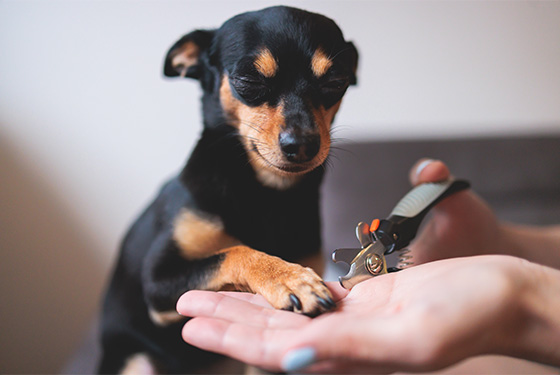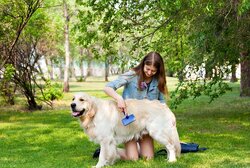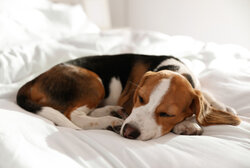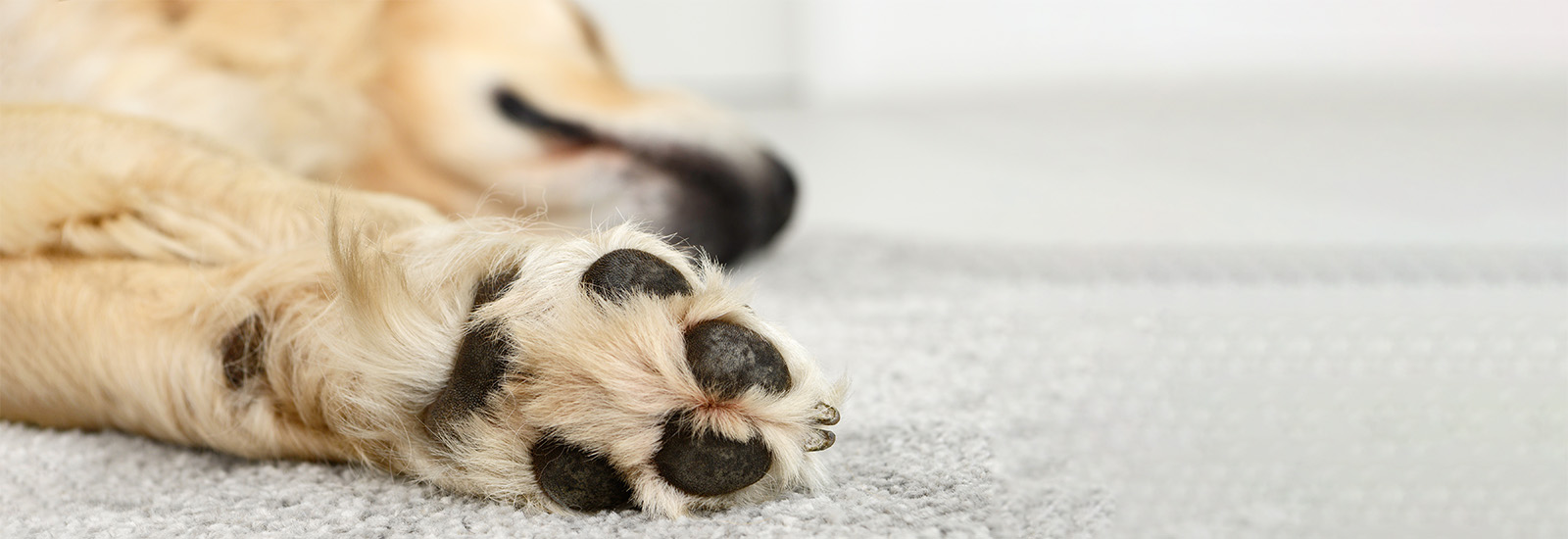How to cut your dog’s claws
A dog’s claws continue to grow throughout its life. They either wear themselves down if the dog is very active or they have to be trimmed regularly. A pair of claw scissors or an electric claw grinder are suitable for cutting a dog’s claws. The following points should be taken into account.
How often do a dog’s claws need to be cut?
Like our fingernails, a dog’s claws continue to grow throughout its life. The growth depends on the dog’s age, breed and individual disposition. On average, claws need to be trimmed approximately every one to two months. There are, however, cases in which this is not necessary at all or only necessary a few times a year. There are also dogs that need to have their claws cut almost weekly.
In addition to the points mentioned above, it mainly depends on where a dog goes for walks and how frequently. Long walks in built-up areas may result in its claws becoming thoroughly worn down due to the tarmac. If, on the other hand, the dog is used to wall-to-wall carpets at home and goes for walks mainly on grass, there will be almost no natural wear. The situation can be similar if a dog spends much less time walking due to age or illness. We should also not forget the so-called dewclaws, which need to be trimmed regularly because they do not wear down by themselves.
When do I have to cut my dog’s claws?
There is one foolproof way to tell when it’s time to cut your dog’s claws: if, when your pet walks on tiles or wooden flooring, you can hear a click with every step, then your dog’s claws are coming into contact with the floor. You can check this when your dog is standing still on a smooth surface. You can then easily see if there is still a small gap between the claws and the ground. To be completely sure, you can also try to slip a piece of paper in between your dog’s claws and the floor.
If this is not possible, your pet’s claws should be trimmed, because otherwise there is the risk of health problems: claws that are too long will press into the claw bed during the natural rolling movement of the paw while walking. This can be very painful in the long term and lead to the dog adopting a relieving posture. This in turn can result in postural damage, joint pain and muscle tension. Claws that are too long can cause the veins and nerves to grow with them. This can have the result that the dog’s claws can no longer be trimmed to the desired length.
What to do if your dog won’t let you cut its claws?
Most dog owners take care of their dog’s claws themselves. This requires the right tools, sufficient self-confidence and a dog that is willing to put up with its claws being cut. If your dog is very fidgety and you are not sure whether you will be able to trim its claws, then it is better to ask your vet or a dog groomer to do it. This service is usually available at a reasonable price. Another option is to ask a family member to help you, however, coordinating with them during the cutting process is often quite difficult, which is why it is usually safer to do it on your own or to get someone else to cut your dog’s claws.

How do I cut my dog’s claws?
If you want to cut your dog’s claws yourself, you should first get the right equipment. Discarded nail clippers are not suitable at all. Not only will they become blunt over time, but they are designed for flat nails and not for curved claws. Only special claw scissors (and clippers) or an electric claw grinder are suitable for this purpose. Most people use claw scissors, but there are some dog owners who say they have had very positive experience with a claw grinder. The noise level of this appliance will usually determine whether the dog accepts it. For a more silent experience, traditional claw clippers can be used. It is also useful to have a nail file and a clean cloth or tissue ready in case you accidentally cut into a vein. A lamp can also be helpful if the surroundings are not bright enough.
It is best to trim your dog’s claws when it is relaxed and there is plenty of light. Take your dog out for a while so it can work off its energy and then wait for it to lie down. Get all the necessary tools ready (including treats) and position yourself so that you have a secure grip on one paw with one hand while you do the cutting with the other. It is important not to trim the claws too deeply, because they contain nerves and veins. With light-coloured claws you will be able to see these very well, but with dark-coloured claws it can be helpful if you proceed gradually and step by step. It is important to avoid accidentally clipping a vein, because the dog will flinch and not only may you have to stop the activity, but your dog may also be reminded of the negative experience in the future. If your pet has dark claws, make sure that you do not trim them any further than necessary and instead repeat the procedure at shorter intervals.
As soon as you can see the vein clearly, place the cut around two millimetres away from it. Position the claw clippers so that there is a slight angle (in the direction of growth) when you cut the claw. The upper side of the claws will then be around one millimetre longer than the lower side. During your initial check, note whether the front and rear claws need to be trimmed by the same amount. The rear claws may be more worn than the front ones and may not need cutting.
Filing your dog’s claws after cutting them
With an electric claw grinder you will usually achieve very good results, whereas with claw scissors, the claw may be left with relatively sharp edges or slight tears. There are several good reasons to file your dog’s claws after they have been cut. Not only does this prevent your pet from getting caught on a tear on one of its claws, but it also significantly reduces the risk of scratching on wooden or laminate flooring. You should therefore file each claw a little with a nail file.
What to do if a claw starts to bleed?
It is always possible that your dog will twitch or jerk at the very moment that you make the cut, causing you to nick a vein. Here, you should calm your dog down and stop the procedure for the time being. Take a clean cloth or tissue and dab it on the wound. Usually the bleeding will stop within a few minutes. If, however, it continues, you can press firmly on the claw with a cotton pad for two or three minutes. Or you may have already equipped yourself with a so-called styptic pen or powder. If the bleeding still does not stop, you will need to see a vet, who will probably cauterise the wound.
You may also like this

Dogs in winter
Ideal items, care and nutrition

Paw care for dogs
Protect your dog’s paws during the cold season

Moulting in dogs
How to help your dog during moulting

Deworming dogs
Regular deworming is useful
